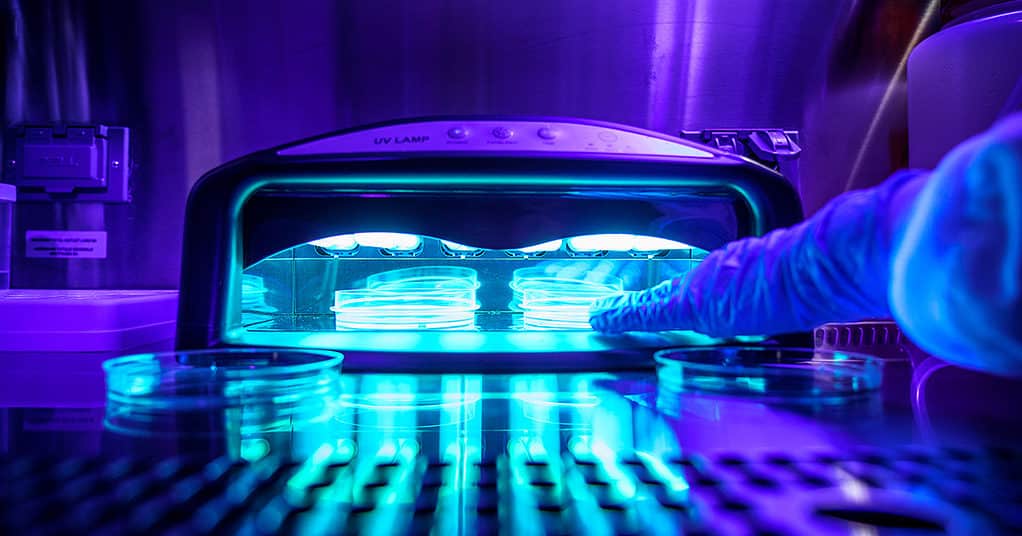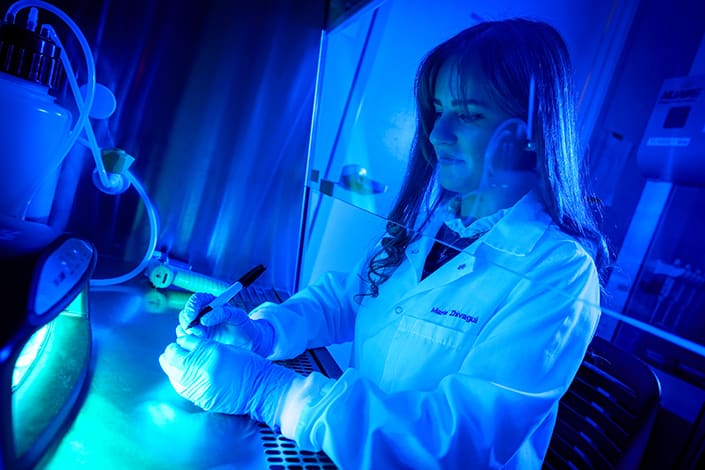
As women across the country flock to nail salons for gel manicures, a new study from the University of California San Diego raises alarm about the safety of the ultraviolet (UV) light emitting devices used to cure the polish. The study, published in Nature Communications, found that the use of these devices leads to cell death and cancer-causing mutations in human cells.
The dark side of gel manicures
UV nail dryers, a common fixture in salons, use a particular spectrum of UV light (340-395 nm) to cure gel polish. While previous studies have conclusively proven the carcinogenic effects of the UV spectrum used in tanning beds (280-400 nm), the spectrum used in nail dryers has not been as extensively studied.
“If you look at the way these devices are presented, they are marketed as safe, with nothing to be concerned about,” said Ludmil Alexandrov, a professor at UC San Diego and corresponding author of the study. “But to the best of our knowledge, no one has actually studied these devices and how they affect human cells at the molecular and cellular levels until now.”

The study, which used three different cell lines—adult human skin keratinocytes, human foreskin fibroblasts, and mouse embryonic fibroblasts— found that just one 20-minute exposure to the UV light emitted by the devices led to between 20 and 30 percent cell death. Three consecutive 20-minute exposures resulted in between 65 and 70 percent of the exposed cells dying. Additionally, exposure to the UV light caused mitochondrial and DNA damage in the remaining cells, and resulted in mutations with patterns observed in skin cancer in humans.
“We saw multiple things: first, we saw that DNA gets damaged,” said Alexandrov. “We also saw that some of the DNA damage does not get repaired over time, and it does lead to mutations after every exposure with a UV-nail polish dryer. Lastly, we saw that exposure may cause mitochondrial dysfunction, which may also result in additional mutations.”
The researchers caution that while the results show the harmful effects of the repeated use of these devices on human cells outside the body, a long-term epidemiological study would be required before stating conclusively that using these machines leads to an increased risk of skin cancers. However, the results of the study were clear: the chronic use of these nail polish drying machines is damaging to human cells.
Maria Zhivagui, a postdoctoral scholar in the Alexandrov Lab and first author of the study, used to be a fan of gel manicures herself, but has sworn never to go through a gel manicure again after witnessing the results firsthand .
“When I saw the effect of radiation emitted by the gel polish drying device on cell death and that it actually mutates cells even after just one 20-minute session, I knew I couldn’t continue using them,” she said.
Is the juice worth the squeeze?

The idea to study UV nail dryers came to Alexandrov in an unlikely place – a dentist’s office. As he waited for his appointment, he read a magazine article about a young beauty pageant contestant who had been diagnosed with a rare form of skin cancer on her finger. This incident sparked Alexandrov’s curiosity and led to the study, which aimed to understand the molecular effects of UV nail dryers on human cells.
The study found that both acute and chronic exposure to the UV light caused cell death, damage, and DNA mutations, with an elevation of reactive oxygen species molecules – known to cause DNA damage and mutations – and mitochondrial dysfunction in the cells. It’s not clear however if getting a gel manicure only once a year is really a cause for concern, which is why the authors call for more research.
As consumers, it’s important to be aware of the potential risks associated with these UV nail dryers and to consider alternative options, such as LED nail dryers, which do not emit UV radiation. The researchers also recommend that salon workers take necessary precautions, such as wearing UV-protective gloves and limiting the amount of time they spend in proximity to the UV light-emitting devices. As the study’s lead researcher warns, “the chronic use of these nail polish drying machines is damaging to human cells.”
“Our experimental results and the prior evidence strongly suggest that radiation emitted by UV-nail polish dryers may cause cancers of the hand and that UV-nail polish dryers, similar to tanning beds, may increase the risk of early-onset skin cancer,” the researchers wrote in Nature Communications. “Nevertheless, future large-scale epidemiological studies are warranted to accurately quantify the risk for skin cancer of the hand in people regularly using UV-nail polish dryers. It is likely that such studies will take at least a decade to complete and to subsequently inform the general public.”
Additionally, it’s worth mentioning that not only UV nail dryers but also UV exposure, in general, can lead to different types of cancer and other skin conditions, such as photoaging, pigmentation, and wrinkles. UV exposure can also cause eye damage, including cataracts and age-related macular degeneration.






